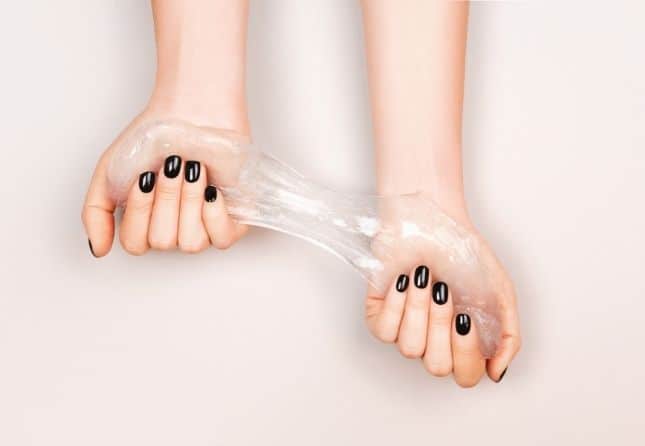
If you’re trying to conceive, you’re most likely no stranger to tracking your hormone levels. One very important reproductive hormone, luteinizing hormone, gives you insight into your fertile window so you have the best chance at conception. But how long does LH stay elevated after ovulation, and why do those numbers matter? In this article, we’ll break down what your LH levels mean and provide tips to make tracking them easier.
If you’re tracking your hormones, you’ve probably noticed a drastic increase in your LH levels around the middle of the month, near the time you ovulate. It may make you wonder,” Why is my LH going up and down before ovulation?” This hormonal influx is called an LH surge, and it’s when your luteinizing hormone levels rapidly increase, signalling your body to begin ovulation.
But why does this surge occur? It’s all part of the follicular phase of your menstrual cycle, where your follicles mature an egg, which is later released for fertilization. When the egg is ready, your LH levels increase quickly, causing the follicle to rupture and release it, a process called ovulation. Without adequate LH levels, ovulation cannot occur, making it a vital part of the reproductive process.
LH levels begin to surge between 24 to 36 hours before ovulation, giving you valuable insights into your peak fertility window. Women who are trying to conceive often ask, “How long after LH surge do you ovulate?” since the timing is so important. Planning for ovulation after LH peak gives you the greatest chance of success.
While every woman is different, on average, an LH surge lasts between 12 to 36 hours. You’ll generally begin noticing your levels rise around 36 hours before you ovulate. Once the surge begins, you’ll have 24 to 36 hours of LH peak; after ovulation, those numbers begin to fall. You’ll notice that your LH numbers are typically highest right before ovulation, which makes sense because the days on and before you ovulate are considered your peak fertility days.
*Luteinizing Hormone (LH) during a 29-day cycle
If you’re wondering, ‘How long is LH surge detectable?” so you can accurately monitor your fertile days, you’re not alone. In fact, we get questions surrounding hormone tracking and fertility all the time. So, how quickly does LH drop after ovulation? In around half of cases, it drops on the day of ovulation.
Answering the question, “When do you ovulate after LH surge,” or “How long after peak LH does ovulation happen?” and “Does LH drop after ovulation,” We say that ovulation generally occurs around 24 to 36 hours after your LH levels peak. However, there are nuances.
No, an LH surge doesn’t always indicate you are about to ovulate. In fact, there are times when your LH levels can rise multiple times throughout your cycle, making it harder to determine when ovulation will occur. Additionally, if the amount of luteinizing hormone released during the surge isn’t enough to stimulate the follicle to release the egg, ovulation may not happen.
In 1/3 of women, anovulation, where an egg isn’t released during ovulation, can also occur regardless of the LH surge. You could hear or read about an LH surge before a period; however, you are unlikely to notice it, as commonly, multiple LH surges happen before or right after ovulation. Usually, this is linked to prolonged cycles and lower levels of estrogen on the third day of the cycle and progesterone in the luteal phase. Knowing how long after LH peak is ovulation will help you determine if the surge resulted in a successful egg release, giving you greater insights into your reproductive health.
A few more points we want to go over regarding luteinizing hormones and ovulation. A common question we receive is whether you can experience an LH surge and ovulation on the same day.
Typically, no; you’ll generally get a positive result on your ovulation test that measures LH in urine 24 to 36 hours before ovulation occurs. We’re also asked, “Can you ovulate before LH peak,” and the answer is no; ovulation requires the release of a mature egg, which only happens after the luteinizing hormone tells the follicle to release it. However, you may miss your LH peak and ovulate simply due to testing on the wrong days.
Now that we’ve answered the question, “How soon do you ovulate after LH surge?” we can offer some valuable tips to make it easier for you to monitor and track your levels.
When trying to determine how soon after LH peak is ovulation, a tracking chart can be your best friend, especially if you are using quantitative LH tests. It makes it easy to track phases of your menstrual cycle so you can predict when ovulation will occur. Using saliva or urine, the chart can tell you if you’re about to ovulate so you can pinpoint your fertile window.
Questioning when you ovulate after LH peak is normal, and finding the answer relies heavily on the timing. Knowing when to test can make all the difference when it comes to getting accurate results. To start, it’s important to make sure you’re testing near the middle of your menstrual cycle, a few days before ovulation. Since you ovulate about 14 days before your period begins, you should start testing your LH levels around 5 days prior. Additionally, tracking during the right time of day is key. While you can take your test at any point throughout the day, you may get more accurate results in the morning.
Simply drink enough so that you are not thirsty. You want your urine to be concentrated since it makes it easier for the tests to make an accurate reading of your LH levels. To get the best results, don’t drink too much for a few hours before your test.
Consistency is key to many things in life, including monitoring your LH levels. Testing at the same time every day will help you establish a consistent pattern, which makes the results more reliable. Consistently watching your hormone levels is also a great way to monitor your overall reproductive health and ensure your body is functioning the way it should.
While they’re designed to make testing your LH levels easy, some tests can still be a bit confusing. LH hormone tests are very similar to a pregnancy test, but it’s still important to closely follow the directions to ensure you receive accurate results. Also, be sure to check the expiration date since using an expired test could provide inaccurate readings. Finally, using a dedicated sample collection container inside the kit will keep everything hygienic.
Pairing an ovulation test with additional methods like monitoring changes in your cervical mucus, taking your basal body temperature, and tracking your menstrual cycle will give you an in-depth look at your overall hormone and reproductive health.
If you’ve utilized all the tips above but are still struggling to conceive, it’s important to speak to your doctor. They can work with you and decide if further testing is required. Remember, it takes around a year for most women to get pregnant, so be patient and don’t give up.
Knowing how long after an LH surge ovulation occurs can help you increase your chances of getting pregnant. Carefully tracking and monitoring your cycle will give you a better understanding of how your body works. The Hormona app is proud to offer comprehensive insights into your hormonal health. Gain deeper insights into your body with this award-winning tool designed by women for women.
Is LH still high after the egg is released?
Typically, no, levels drop the day after ovulation; however, it might be high in case progesterone levels are lower than your brain expects them to be.
How long after LH peak do you ovulate?
While LH levels peak 24 to 36 hours before ovulation, they generally surge 8 to 20 hours beforehand.
How high should LH be after ovulating?
The day after ovulation, your urine LH levels could be between 4.1-23.5 mIU/mL.
Why is my ovulation test getting darker after ovulation?
If your ovulation test gets darker after ovulation, it could simply mean your LH levels are still high and haven’t returned to normal yet.
How do you know if you ovulate twice?
Most women have only one ovulation per cycle, so a high chance is that you have a single ovulation as well. The only way to know if you’ve ovulated twice during your menstrual cycle is by getting a daily ultrasound during your menstrual cycle. At-home tests can not detect hyperovulation or when more than one egg is released during the same cycle.
Does LH always drop after ovulation?
Yes, in a typical menstrual cycle, LH levels will drop after you ovulate.

-


Dr Singh is the Medical Director of the Indiana Sleep Center. His research and clinical practice focuses on the myriad of sleep.

What vaginal discharge colors mean for your health Understanding vaginal discharge colors and meaning is essential for every woman at every stage of life. While some colored discharge may indicate infections, others are normal. White and clear The first discharge

Understanding perimenopause and menopause When talking about perimenopause versus menopause, it’s easy to confuse these two stages. Perimenopause is the transitional period when you move away from your peak fertility and your ovaries gradually stop releasing eggs. In turn, menstruation

Understanding perimenopause and its symptoms When it comes to aging, many women know about menopause but are surprised to learn about the transitional stage leading up to it, called perimenopause. There are three stages of perimenopause: early, late, and menopause,
| Cookie | Duration | Description |
|---|---|---|
| cookielawinfo-checkbox-analytics | 11 months | This cookie is set by GDPR Cookie Consent plugin. The cookie is used to store the user consent for the cookies in the category "Analytics". |
| cookielawinfo-checkbox-functional | 11 months | The cookie is set by GDPR cookie consent to record the user consent for the cookies in the category "Functional". |
| cookielawinfo-checkbox-necessary | 11 months | This cookie is set by GDPR Cookie Consent plugin. The cookies is used to store the user consent for the cookies in the category "Necessary". |
| cookielawinfo-checkbox-others | 11 months | This cookie is set by GDPR Cookie Consent plugin. The cookie is used to store the user consent for the cookies in the category "Other. |
| cookielawinfo-checkbox-performance | 11 months | This cookie is set by GDPR Cookie Consent plugin. The cookie is used to store the user consent for the cookies in the category "Performance". |
| viewed_cookie_policy | 11 months | The cookie is set by the GDPR Cookie Consent plugin and is used to store whether or not user has consented to the use of cookies. It does not store any personal data. |
